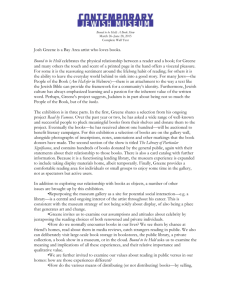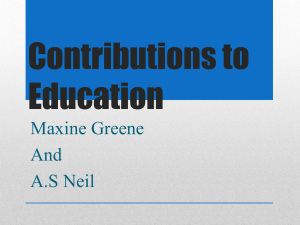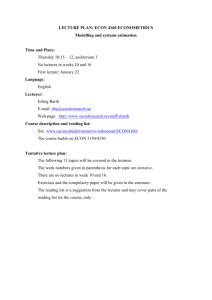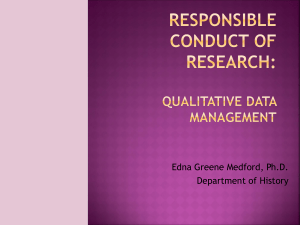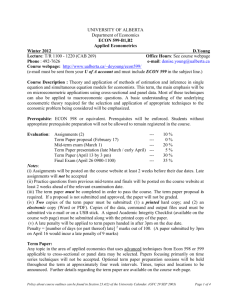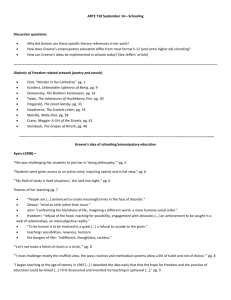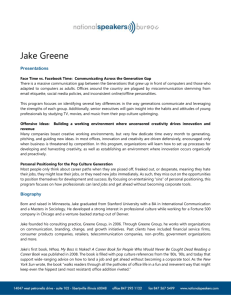SELLING THE FAMILY SILVER It appears contradictory that Graham
advertisement
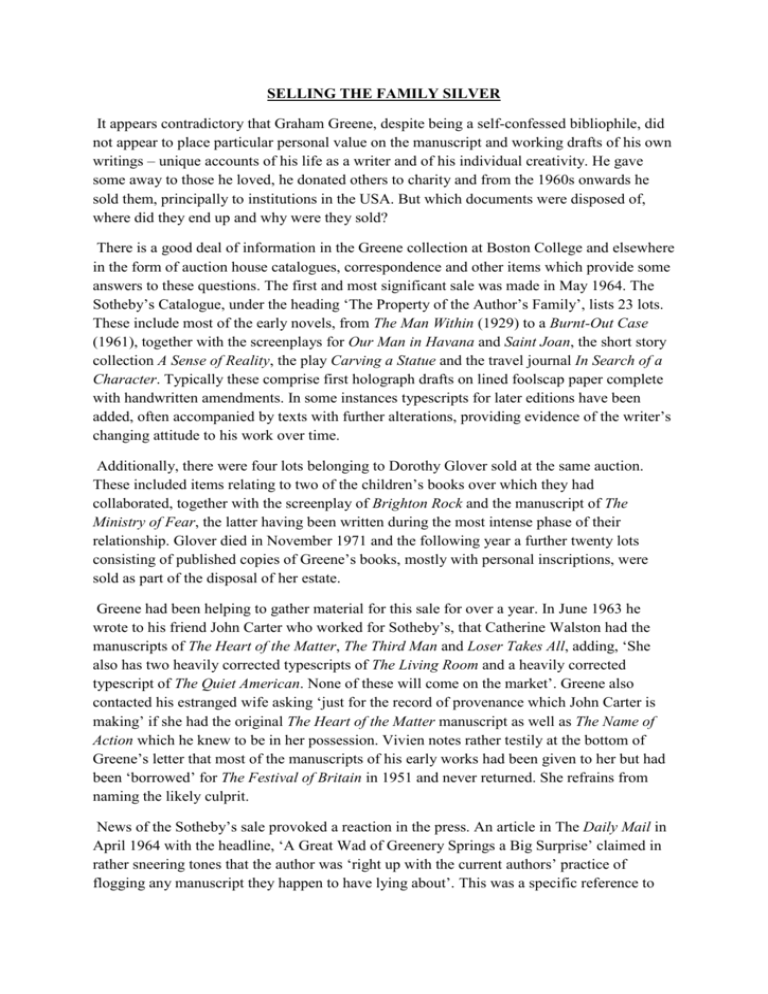
SELLING THE FAMILY SILVER It appears contradictory that Graham Greene, despite being a self-confessed bibliophile, did not appear to place particular personal value on the manuscript and working drafts of his own writings – unique accounts of his life as a writer and of his individual creativity. He gave some away to those he loved, he donated others to charity and from the 1960s onwards he sold them, principally to institutions in the USA. But which documents were disposed of, where did they end up and why were they sold? There is a good deal of information in the Greene collection at Boston College and elsewhere in the form of auction house catalogues, correspondence and other items which provide some answers to these questions. The first and most significant sale was made in May 1964. The Sotheby’s Catalogue, under the heading ‘The Property of the Author’s Family’, lists 23 lots. These include most of the early novels, from The Man Within (1929) to a Burnt-Out Case (1961), together with the screenplays for Our Man in Havana and Saint Joan, the short story collection A Sense of Reality, the play Carving a Statue and the travel journal In Search of a Character. Typically these comprise first holograph drafts on lined foolscap paper complete with handwritten amendments. In some instances typescripts for later editions have been added, often accompanied by texts with further alterations, providing evidence of the writer’s changing attitude to his work over time. Additionally, there were four lots belonging to Dorothy Glover sold at the same auction. These included items relating to two of the children’s books over which they had collaborated, together with the screenplay of Brighton Rock and the manuscript of The Ministry of Fear, the latter having been written during the most intense phase of their relationship. Glover died in November 1971 and the following year a further twenty lots consisting of published copies of Greene’s books, mostly with personal inscriptions, were sold as part of the disposal of her estate. Greene had been helping to gather material for this sale for over a year. In June 1963 he wrote to his friend John Carter who worked for Sotheby’s, that Catherine Walston had the manuscripts of The Heart of the Matter, The Third Man and Loser Takes All, adding, ‘She also has two heavily corrected typescripts of The Living Room and a heavily corrected typescript of The Quiet American. None of these will come on the market’. Greene also contacted his estranged wife asking ‘just for the record of provenance which John Carter is making’ if she had the original The Heart of the Matter manuscript as well as The Name of Action which he knew to be in her possession. Vivien notes rather testily at the bottom of Greene’s letter that most of the manuscripts of his early works had been given to her but had been ‘borrowed’ for The Festival of Britain in 1951 and never returned. She refrains from naming the likely culprit. News of the Sotheby’s sale provoked a reaction in the press. An article in The Daily Mail in April 1964 with the headline, ‘A Great Wad of Greenery Springs a Big Surprise’ claimed in rather sneering tones that the author was ‘right up with the current authors’ practice of flogging any manuscript they happen to have lying about’. This was a specific reference to Carving a Statue and the fact that the play would not premiere for a further six months. Embarrassingly, the article provided details of the plot. Greene later regretted its inclusion in the sale, adding in a letter to his agent, ‘…it hadn’t occurred to me that one of those snooping reporters would go round and read it’. Laurence Pollinger himself first learned of the sale after reading The Daily Mail. He wrote to Greene rather aggrievedly, ‘Until I read what Mr Grenville sets out I had no idea you were selling your manuscripts’. The 1964 collection was purchased by the Humanities Research Center (HRC) at the University of Texas. The sale was brokered through Lew Feldman’s House of El Dieff in New York and set the pattern for the next fifteen years during which a large number of other manuscripts were sold privately to the HRC via Sotheby’s and El Dieff. For example, in 1966 John Carter sent Greene’s secretary an extensive list of some 34 items, or groups of items, which were being prepared for sale. These included Greene’s personal journals, articles and introductions to books, film-scripts, abandoned or unfinished novels, short stories and plays. Surprisingly, given Greene’s experience with Carving a Statue, the manuscripts and typescripts of nine stories from the May We Borrow Your Husband? collection, yet to be published, together with the working papers and various manuscripts relating to The Comedians published that same year were included in the list. Greene’s obvious desire to keep on friendly terms with the HRC is demonstrated by the fact that he gifted the galleys and proof copies of the published version of Carving a Statue together with other typescripts of the play. The good relationship with the University of Texas lasted through most of the 1970s. In September 1973 John Carter wrote to Lew Feldman informing him that his client was looking to sell manuscripts relating to his autobiography A Sort of Life and to his novel The Honorary Consul, due to be published in a few days’ time. Additionally, Carter sent details of over 40 other manuscripts which included more unpublished fiction, essays and personal diaries. Over a decade later, there is a suggestion that Greene might have considered he had been too hasty in letting go of some more personal papers which documented aspects of his personal life he had always striven to remain confidential. In 1985 his sister Elisabeth wrote to Greene’s agent concerned that the content of a recent BBC programme had suggested that one of their researchers had been ‘delving around in Texas University’. She reminded him that Graham had expressly stated that only Norman Sherry should have access to these archives. In April 1979 there was a dispute over a late payment for a manuscript. This was attributed to a change in administration at the HRC. Six months later, Louise Dennys in her capacity as Greene’s secretary, instructed Sotheby’s that either the money should be forthcoming from Texas or the manuscript returned. Thus an intervention by Joseph Jeffs at this point was most timely. The Georgetown University librarian wrote to Greene in November 1979 explaining that his institution had recently bought the manuscript of For Whom the Bell Chimes as part of a move to increase their holdings of Catholic writers and intellectuals. Greene replied affirmatively with an offer of some correspondence with Edith Sitwell. Jeffs responded eloquently, ‘Alas! we are a johnny-come-lately on the scene, trailing in the smoke of the all-consuming University of Texas behemoth’. This early exchange between writer and librarian marked the start of the type of warm, personal relationship over professional matters which Greene relished. In this case it lasted for the rest of Greene’s life. Jeffs and his wife visited Antibes and the writer went to Georgetown in October 1985. Significantly, in 1981 Greene wrote to Jeffs that he liked the idea of Georgetown becoming ‘the eventual repository of my journals and diaries and other correspondence’. As a result, Georgetown University acquired a number of Greene’s later manuscripts together with some unpublished writings and working notes. Probably as important, Greene persuaded Harry Walston to sell his late wife’s collection to the University – admittedly for tax reasons. This collection included over 1200 letters and cards written to Catherine, a number of manuscripts and her personal library of books by Greene, many containing personal inscriptions. Other notable collections pertaining to Greene were acquired subsequently, some on the basis of the writer’s advice. These included those of Hugh and James Greene, Fr. Leopoldo Durán, Anita Bjȍrk and Greene’s officially appointed bibliographers Alan Redway and Neil Brennan. After Greene’s death a third North American university, Boston College, bought a sizeable number of manuscripts and certainly the largest single collection of correspondence extant. The vast majority of the letters by Greene are file copies kept by the writer’s successive secretaries. Why did Graham Greene decide to dispose of these valuable working manuscripts and other writings? Was he simply following a trend among fellow writers when he sold the first batch in 1964? The Daily Mail journalist quoted above certainly thought so. But that would not have been in character. Did he need the money? At the time he was apparently financially secure. The Thomas Roe affair, which was to reveal that he had been robbed of his foreign rights income by a corrupt financial adviser, was still a year away. The first intimation that the writer was thinking of selling his manuscripts is to be found in a letter to John Carter in March 1963. Greene states that a recent discussion with his accountant had made him conscious of the future, his estate duties and his beneficiaries. He thinks he has around fifteen manuscripts and would like Carter’s opinion on the timing of any sale, given that in future there was likely to be a reduced output of work and what he describes as ‘a drop in fashion’. Consequently, the proceeds from both the 1964 and 1966 sales, the first of which Greene stated had been ‘more than I had hoped for’, were divided equally between Vivien and his two children. But why was the decision taken to sell the first, and most important group of his works, in 1964? The obvious conclusion is that John Carter must have felt the time was right to maximise profit from the sale. But was there another more personal reason which drove Greene to expedite this matter? Around this time he seemed to be convinced that the end of his life was fast approaching. In the manuscript copy of his introduction to Les Oeuvres Choisis, written in 1964, he pictured himself as ‘the tattered leader of a tired column pressing on towards a final frontier’. He developed this image in a frank and pessimistic succession of diary entries written around the time of his sixtieth birthday while he was languishing in rented accommodation in Antibes. In what turned out to be a short-lived journal, he persuaded himself that he was entering his last decade and had just one more novel left to write. It would seem therefore that his mood at the time persuaded Greene that it was timely to make provision for those who would outlive him. After the effect of the Roe scandal had passed he was to state on more than one occasion that he did not need to write for money any more. Any earnings he did accrue would simply benefit family members. Thus it is that archives in the United States rather than Britain are profoundly richer as a result. But why that should be is another matter entirely. Jon Wise
